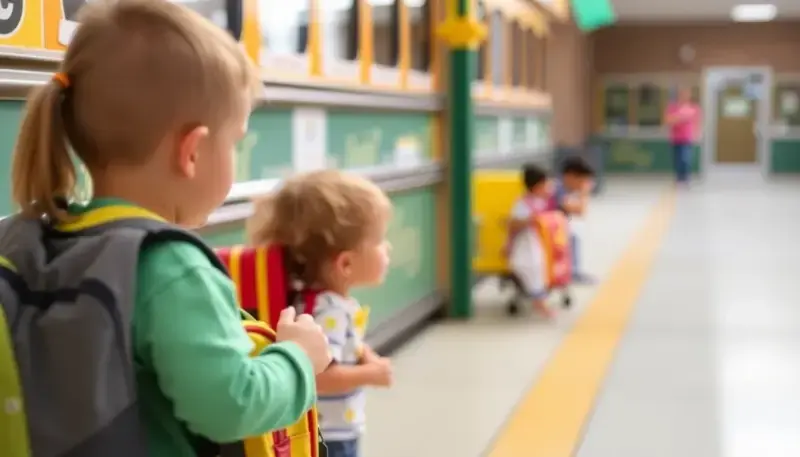As the school year approaches, both parents and students must prepare for the daily routines that come with it. Safety should be a primary concern during this transition, especially in school zones where heightened traffic and pedestrian activity can create risks. Here’s a comprehensive guide to ensuring a secure environment for children as they head back to school.
Understanding the Importance of School Zone Safety
School zones are designated areas that require special attention from drivers, students, and parents. These zones are critical because they are often filled with children walking, biking, and waiting for buses. Awareness and caution in these areas can significantly reduce the risk of accidents.
According to statistics, pedestrian injuries are more likely to occur in school zones where children are present. Therefore, understanding the dynamics of traffic around schools is essential for everyone involved. Local authorities often place signs and signals to alert drivers, but it is the responsibility of the drivers to remain vigilant.
Back to school safety tips for drivers
For drivers, navigating school zones requires extra caution. Here are some crucial tips to keep in mind:
- Slow down and adhere to all posted speed limits. Speed limits are often reduced in school zones for a reason.
- Be aware of drop-off and pick-up protocols established by the school to ensure children's safety during these busy times.
- Avoid double parking or stopping in crosswalks, which obstructs visibility for other drivers and pedestrians.
- Never load or unload children across the street from the school. This practice increases the likelihood of children crossing busy roads unnecessarily.
- Watch for flashing yellow lights on school buses, indicating that they are about to stop. Exercise caution in these situations.
- Stop for school buses with flashing red lights, regardless of your direction of travel. It’s critical to wait until the bus resumes motion and the lights are turned off.
- Keep an eye out for children walking or biking both on the road and sidewalks near schools.
- Be attentive to children gathering near bus stops or running late, as they may unexpectedly enter the street.
- Always check for children when reversing your vehicle, especially in residential areas or driveways.
School safety tips for students
Students also play a key role in ensuring their own safety. Here are important safety tips for them:
- Always use crosswalks when crossing the street and look both ways before stepping off the curb.
- Wear a helmet when biking to school to protect against head injuries.
- Stay alert and avoid distractions, such as using mobile phones, while walking or biking.
- Travel in groups when possible, as there is safety in numbers.
- Follow school rules about where to wait for buses and how to board them safely.
Choosing the Right Backpack for School Safety
A backpack is an essential item for students, but it can also pose risks if not used correctly. Here are some guidelines for parents when selecting a backpack:
- Choose a backpack with ergonomic features that promote safety and comfort, such as padded straps and back support.
- Ensure the backpack does not exceed 10 to 20 percent of your child’s body weight to avoid strain and injury.
- Encourage your child to use both straps when wearing the backpack to evenly distribute the weight.
Back to school safety month
September is often recognized as Back to School Safety Month, a time when communities focus on raising awareness about school safety. Schools, parents, and local authorities collaborate to promote safe practices. Here are some activities commonly organized during this month:
- Safety workshops for students and parents that cover topics like traffic safety and emergency preparedness.
- Community events that involve local law enforcement in discussions about school zone safety.
- Distribution of informational materials highlighting the importance of safety in school zones.
Infographics and Resources for School Safety
Visual aids can significantly enhance the understanding of safety protocols. Infographics detailing school safety rules and tips can be effective tools for communication. Consider creating or sharing infographics that cover:
- Key statistics about school zone accidents.
- Visual representations of proper pedestrian behavior.
- Emergency contact information and procedures for schools.
For additional insights, you can check out helpful video resources like this one on YouTube:
School safety checklist for teachers
Teachers also play a vital role in ensuring a safe environment for students. A safety checklist can assist educators in maintaining a secure classroom and school environment:
- Conduct regular safety drills, including fire and lockdown drills.
- Ensure that all emergency exits are clearly marked and accessible.
- Maintain clear communication with students regarding safety procedures.
- Monitor the school grounds for any potential hazards.
- Foster a supportive environment where students feel comfortable reporting safety concerns.
What to do in case of an accident
Despite all precautions, accidents can still occur. In the unfortunate event that a child is injured, it’s crucial to know the appropriate steps to take:
- Ensure the child receives immediate medical attention.
- Document the incident thoroughly, including photos and witness statements.
- Contact the appropriate authorities to report the incident.
- Consider seeking legal advice if necessary to understand rights and responsibilities.
- Maintain open communication with the school regarding the incident and follow up on any safety measures.
With the right preparation and awareness, this school year can be safe and enjoyable for everyone involved. Parents, students, and drivers must work together to create a secure environment in school zones. Remember, safety is a shared responsibility, and being vigilant can make a significant difference.

